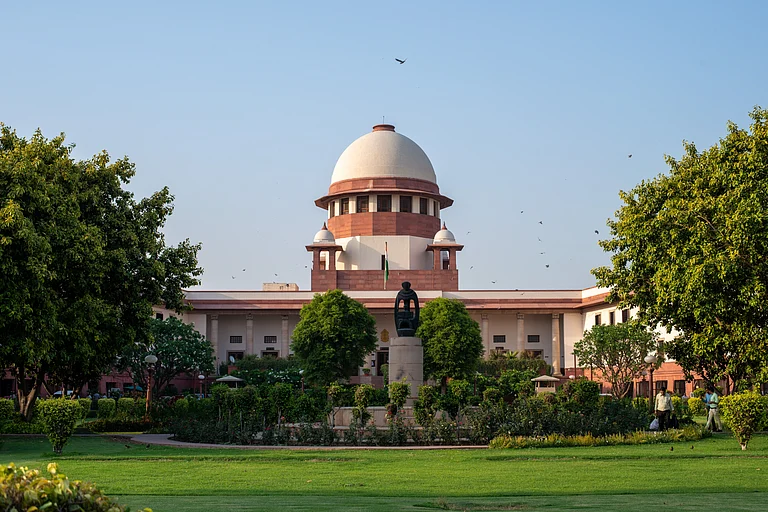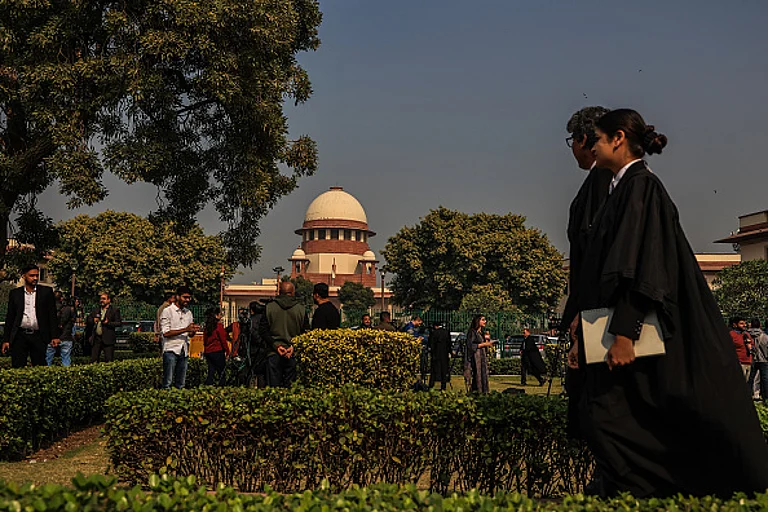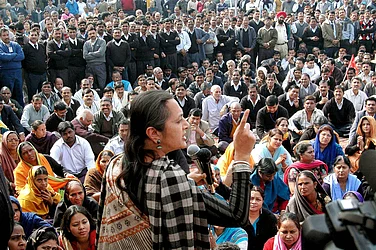(This is an edited excerpt from the book Sex and the Supreme Court, edited by Saurabh Kirpal, and published in 2020 by Hachette India. Menaka Guruswamy is a Senior Advocate at the Supreme Court of India, and Arundhati Katju is a lawyer qualified to practice in India and New York, working out of the Indian Supreme Court and Delhi High Court.)
2018 was a dramatic year for Indian constitutionalism. This was the year the Indian Supreme Court embraced sexuality as an integral part of citizenship. In Navtej Singh Johar v. Union of India, the Court finally recognised the constitutional rights of equality, dignity, expression, life and liberty of LGBTQ Indians. In Indian Young Lawyers Association v. State of Kerala, better known as the Sabarimala decision, the Supreme Court found that it was constitutionally obligated to allow Hindu women of faith of a menstruating age to access the Sabarimala temple in Kerala, from which they had hitherto been excluded. Finally, in Joseph Shine v. Union of India, the Court struck down Section 497 of the Indian Penal Code, 1860, which enabled a husband to file a criminal complaint of adultery against his wife’s male lover, because it was unconstitutional.
This was also the year that the Supreme Court celebrated constitutional morality. The underlying logic of each of these decisions was that constitutional morality leads the Court to strike down laws that may be justified in the name of social convention, but social morality must bend before constitutional values of equality and dignity. In Johar, constitutional morality led the Court to strike down the sodomy law; in Sabarimala, it held that religious sentiment could not trump women’s right to equality; in Shine, the Court held that constitutional morality would also govern marriage.Is marriage a private relationship or a public one? Marriage may be the most delicate and intimate of relationships, but it also enjoys social, political and economic functions.
Any entry that the law may make into the matrimonial bond has been heavily contested. Recall B.R. Ambedkar’s resignation over opposition to the Hindu Code Bill, the continuing debate over the validity of the cruelty provisions under Section 498A of the Indian Penal Code, 18604 and what might be thought of as the failure of the dowry prohibition law.
Marital rape is an area of both matrimonial and criminal law that has remained stubbornly resistant to reform. Exception 1 to Section 376 of the Indian Penal Code, 1860 (‘the marital rape exception’) provides that non-consensual sexual intercourse by a man upon his wife, when she is above the age of 15, is not a criminal offence. In this paper, we argue that by extending the doctrine of constitutional morality to the marital relationship, Joseph Shine is a crucial stepping stone to striking down the marital rape exception.
JOSEPH SHINE: CONSEQUENCES FOR MARITAL RAPE IN INDIA
In Joseph Shine, the Court sought to ensure that marriage enters the domain of the application of constitutional dignity of each citizen, including those of wives. Many years ago, Menaka Guruswamy argued elsewhere that men and women alike possess equal citizenship rights under the Indian Constitution, and that ‘the ability to withhold consent in the context of sex is a crucial ingredient of the constitutional self.’
The article details how India was an outlier when it came to the recognition of marital rape as a crime, and that countries as close as Nepal and Bhutan, along with 102 other countries from the global South and the global North, had criminalised marital rape.
The Penal Code regulates marriage through a number of provisions, including the marital rape exception. Section 376, the rape law provision, excludes marital rape. It says ‘sexual intercourse by a man with his own wife, the wife not being under 15 years of age, is not rape.’Amendments to the Penal Code in 2013 made it an offence for a man to have non-consensual intercourse with his wife if they were legally separated (Section 376A IPC), but the marital rape exception under Section 375 IPC was left untouched.
In Joseph Shine, the Supreme Court makes a preliminary case for the recognition of marital rape, ‘implicit in the seeking to privilege the fidelity of women in a marriage, is the assumption that a woman contracts away her sexual agency when entering a marriage… Curtailing the sexual autonomy of a woman or presuming lack of consent once she enters marriage is antithetical to constitutional values.’ Since the Court had decided Navtej Singh Johar before Shine, it could look at its own jurisprudence on sexual autonomy and consent from Johar, and rely on it.
Deleting the marital rape exception outright has found few takers. The Law Commission of India dealt with the marital rape exception its 84th and 172nd Reports, issued 20 years apart in 1980 and 2000, respectively. In the 84th Report, the Law Commission recommended raising the age of the wife to 18 years rather than abolishing the exception outright. Since the Child Marriage Restraint Act, 1929 prohibited girls younger than 18 years old from marrying, the Law Commission recommended that the minimum age of consent should be a uniform 18 years across the board, whether for statutory rape or for the marital rape exception.
The Law Commission took up the issue again in 2000, in its 172nd Report. It argued again in favour of retaining the marital rape exception,this time recommending that the age of the wife be placed at 16 rather than 18 years. Deleting the exception for women above 16 would amount to ‘excessive interference with the marital relationship.’
The sexual assault law under the Indian Penal Code, 1860 was amended extensively in 2013 following the 16 December 2012 gang rape of a young woman in the nation’s capital. However, the Criminal Law (Amendment) Act, 2013 left the marital rape exception untouched. The J S Verma Committee, tasked with making recommendations for the overhaul of the sexual assault law after the 16 December rape case, had recommended withdrawing the exception.32 Many of its recommendations were incorporated into the Criminal Law (Amendment) Act, 2013, but not this one about marital rape.
The J.S. Verma Committee reasoned that the marital rape exception was based on an outdated notion of marriage. Women were no longer regarded as the property of their husbands, and the exception had been withdrawn in many jurisdictions such as England and Wales, Canada,South Africa and Australia. The European Commission of Human Rights had endorsed a conviction for marital rape in CR v. United Kingdom,leading to amendments being passed in the Criminal Justice and Public Order Act, 1994.
When the issue arose in the Indian Parliament, the department- related Standing Committee on Home Affairs rejected the Verma Committee’s recommendations regarding marital rape in its 167th Report on the Criminal Law (Amendment) Bill, 2012. The Standing Committee had called for suggestions from the public and from State and Union Territory governments. With respect to marital rape, the Committee received the suggestion that marital rape could be included in the proposed Section 376A of the Indian Penal Code (which penalised non- consensual sexual intercourse by a man with his wife during a legal separation), making rape by a husband during the subsistence of the marriage punishable at par with the general rape law. This suggestion was also rejected.
THE CONSTITUTIONAL POTENTIAL OF JOSEPH SHINE
Shine establishes a firm foundation to recognise marital rape. No doubt the lack thus far of such recognition is a constitutional embarrassment.That a five-judge Bench grounds their reasoning along lines of female sexual autonomy is one of the most dramatic long-term jurisprudential implications of Joseph Shine.
The Misra bench that decided Johar and Shine invoked another common theme, of the role of a constitutional court in unpacking colonial-era laws and the colonial morality that defines them. The Shine Bench, like the Bench did in Johar, responds to the call of precedent that binds us to colonial morality, with a stern call to look to transformative constitutionalism. It argues that the Victorian morality that inspired this penal provision is antithetical to constitutional guarantees of liberty, dignity and equality. And the Court emphasises that the criminal law must be in consonance with constitutional morality.
It is constitutional morality that leads to the constitutional court ruling against a 160-year-old sodomy law, or the similarly archaic adultery law or a temple entry ban on women. The rejection of constitutional morality would render the loss of a valuable instrument against social or popular morality or even legislative inaction to reform laws that are constitutionally untenable.
Social morality may call for retention of the marital rape exception. Proponents of social morality seem to argue that allowing rape tohappen in marriage preserves an aspect of the marital bond that is essential for our society and culture. They may point to a society that is feudal, poor and backward, where women have a subordinate position within the marital relationship; and argue that changing this dynamic will cause social upheaval and chaos.
The doctrine of constitutional morality challenges this status quo. Constitutional morality requires that, when the law governs intimate relationships, it holds them to the standard of the Constitution—ensuring equality and dignity. The doctrine enjoins the Court to play a counter-majoritarian role, protecting individuals and minorities against majoritarianism.
Joseph Shine brings the doctrine of constitutional morality to bear in intimate relationships. Shine is a crucial step forward in that it holds that intimate relationships, even within the institution of marriage, must be tested against the standard of constitutional and not social morality.
What is the future of marriage in India? Unlike Western Europe, where marriage rates are on the decline, Indian society is a firm believer inmarriage. Divorce may be on the rise, but marriage is firmly embedded in the social psyche. As the Supreme Court noted in Independent Thought, in several parts of the country women get married well below the legal age, leading to an increase in population growth. Marriage is not going anywhere. Law reform has brought forth a number of protective measures for wives, recognising the imbalance of power in this relationship.
Legislation has changed the legal contours of the relationship: Section 498A IPC, the Dowry Prohibition Act, the Prevention of Child Marriage Act, the Protection of Women from Domestic Violence Act, and so on. It’s a long list.
But the marital rape exception is stubbornly impervious to change.What is it about sexual intimacy within marriage that makes it an exception? Can we dream of a future where marital intimacy is also thought of within a framework of equality and dignity? The institution of marriage is changing—same-sex couples wish to be embraced in its fold—and Joseph Shine’s insistence that intimacies in marriage are governed by constitutional morality, and that women and men have sexual autonomy within marriage, takes us towards that future.























